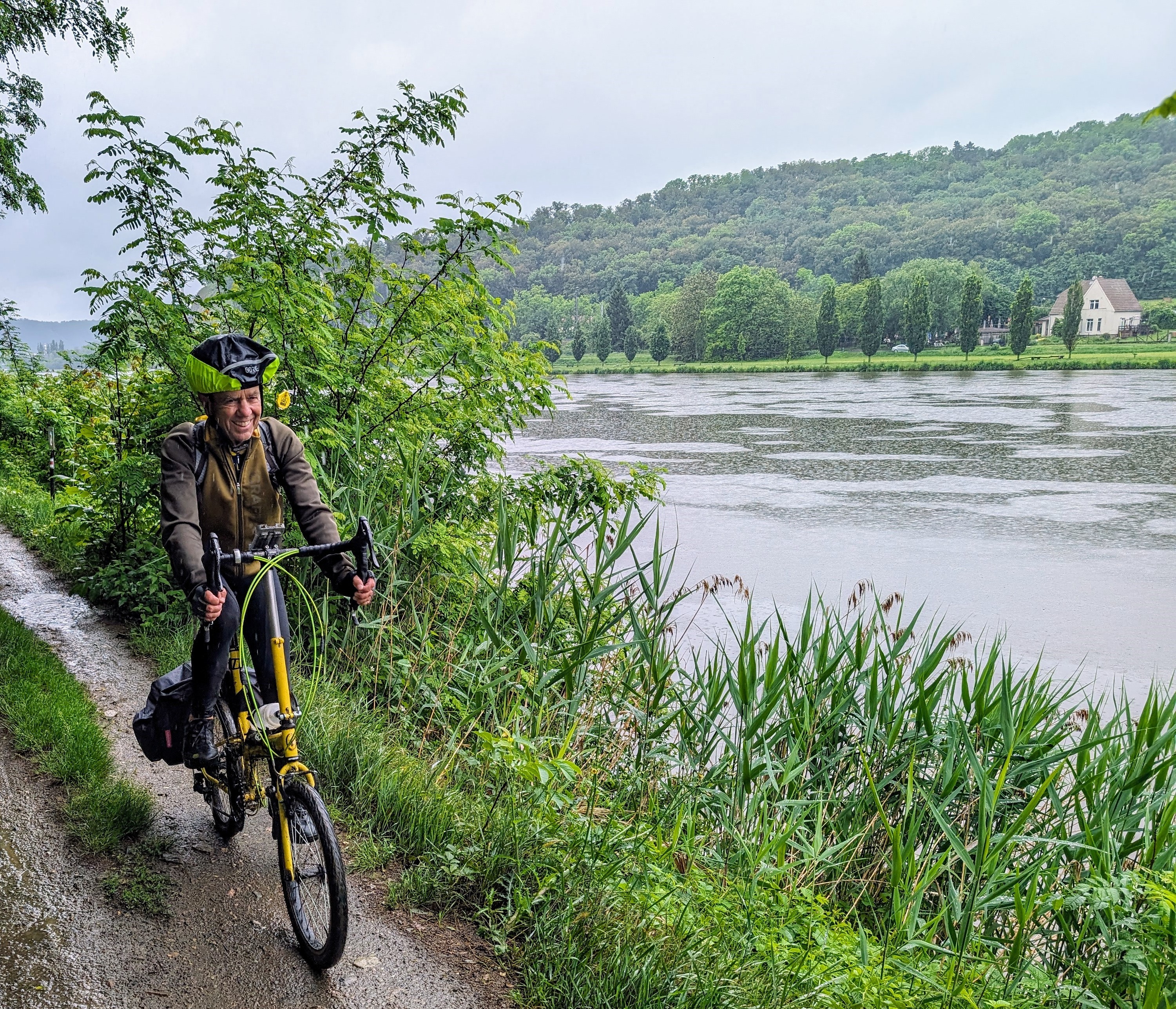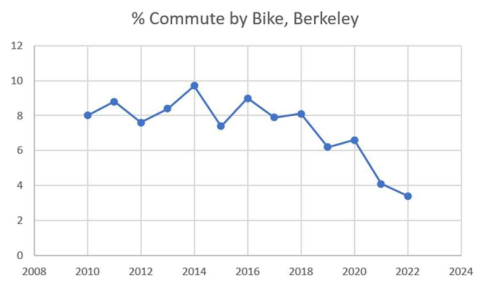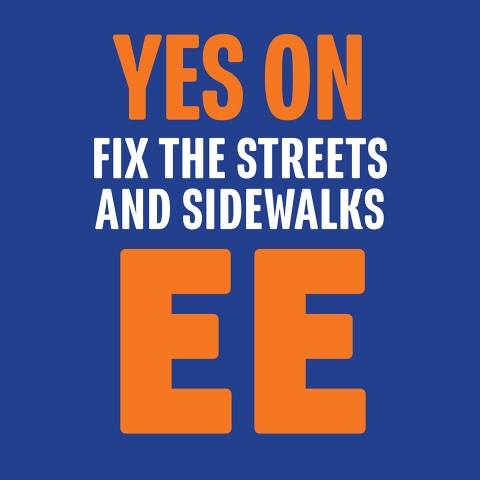
Toward a Better Bike Plan for Berkeley
The 2017 Berkeley Bike Plan begins with this statement: “Berkeley is a bicycle city. According to the US Census 2014 ACS, Berkeley has the fourth highest bicycle commute mode share (8.5%) of any city in the U.S. In practical terms, this means that nearly one out of every 10 Berkeley residents rides a bicycle to work as their primary transportation mode.”
I was surprised to read this. I’ve been using a bike as my primary transport in Oakland and Berkeley for the last 12 years and it seemed to me that despite much progress made on bike lanes and other bike infrastructure, the number of cyclists I saw was low and declining. If the claim were true, I’d expect to see much more than 10% as many bikes as cars in general around town. But there are very few places where that’s the case.
Digging into the US Census data that supports the claim I found that things have changed significantly since the claim was made. Here’s the data from 2008 to 2022 (the latest available):

Note that this decline has occurred at a time when the student population at UC has increased by about 10,000 students; one would expect that increase to have driven an increase in bike mode- share, but the opposite has occurred. Note also that the decline began before the pandemic shutdown.
I am an avid cyclist and have dozens of cyclist friends. I and many of them don’t use a lot of the new bike infrastructure for a number of reasons that may be familiar to people who follow this topic. When I mention this to bike advocates I’m always told that these projects are not for us, the “Strong and Fearless” rider type, but rather to entice new riders to come out. But where are these new riders?
What’s going on? Shouldn’t we try to find out?
I served as a member of the Transportation and Infrastructure Commission for a year and in that time I and another commissioner brought up the question of trying to measure the effectiveness of projects. City staff said that systematic traffic counts hadn’t been done since 2018 due to other priorities; the commission majority expressed little interest in the topic. Anecdotally it seems to me that some of the new infrastructure is well-used and some is not. But anecdotal observation is no substitute for the systematic gathering of data. The 2017 Bike Plan claims to be a data-driven effort, but where’s the data?
The cycling landscape is changing rapidly with the fast adoption of electric bikes and scooters and transportation planning should take this into account. A UCSF study indicates that the rate of injury due to e-bikes has doubled every year between 2017 and 2022. The Bike Plan recommends building many expensive two-way cycle-tracks; are these well-used now? Will cyclists want to share them with 70-pound e-bikes doing 20 or 28 mph in the other direction?
We should take a step back and see what’s working and what is not, and use that data to guide a revision of the bike plan. For this reason I support Measure EE to repave streets and repair sidewalks, and not FF which would do that and also set aside $100M for other unspecified Complete Streets projects. Transportation policy should not be a faith-based initiative.
Rick Raffanti is a former member of the Transportation and Infrastructure Commission, was born in Oakland and moved to Berkeley in 2015.

